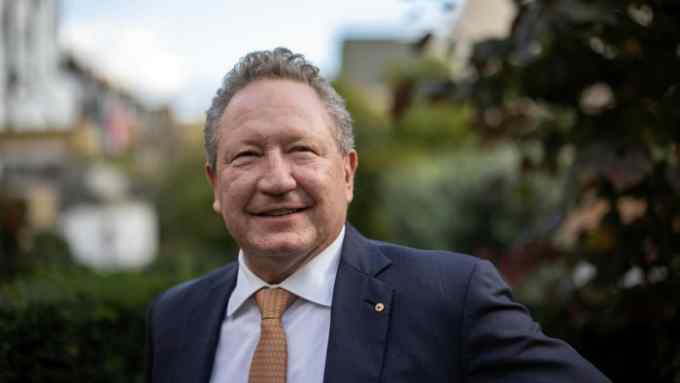Alicia Eastman: Green hydrogen will be price-competitive by 2030

Roula Khalaf, Editor of the FT, selects her favourite stories in this weekly newsletter.
InterContinental Energy, one of the largest developers and earliest investors in carbon-free “green hydrogen” projects, is forecasting that the cost of the fuel will be competitive by the end of the decade.
Alicia Eastman, president of the company, says the scale of its coastal clean energy hubs, in countries like Australia and Oman, would demonstrate the fuel could be cost competitive in the coming years.
Last month, BP took a 45 per cent stake in the Asian Renewable Energy Hub (AREH) in Western Australia that InterContinental Energy had first developed — thrusting the energy project into the spotlight.
BP will operate the AREH project as part of a move to accelerate its transition to renewable energy. It describes it as “one of the largest renewable and green hydrogen energy hubs in the world”. InterContinental will retain a 26.4 per cent stake.
Eastman says the development of the site stemmed from an early belief that coastal sites would be key to making green energy that can be exported around the world.

“We came from a place of thinking that the world needs more green electricity and the cheapest green electrons were at these coastal sites, with sun in the day and wind at night,” she explains.
“Under those conditions, it becomes almost like baseload power, with very high utilisation rates unlike the intermittency of sun and wind alone.”
InterContinental, which was set up in 2014, had initially targeted exporting green electricity by undersea cables but then saw the developing potential of hydrogen created from wind and solar.
“We soon realised that there are a lot of industries that don’t need electrons — they actually need a fuel,” Eastman says. “A lot of people that need it are never going to be connected to a grid. So we really looked at hydrogen again.”
The company, which has also attracted investment from Singapore’s sovereign wealth fund, is looking to make hydrogen in the form of easily exportable ammonia, which can act as a solid-state carrier for the fuel.
“Shipping can use it as a green fuel and countries like Japan can use it as a dual fuel in fossil fuel plants — that’s extremely efficient as we don’t need to crack ammonia back to hydrogen again,” she says.
The role of hydrogen is not limited to power generation. Eastman argues that, as well as heavy transport like trucks and buses, where there is already a nascent hydrogen role, passenger cars are likely to develop swiftly in certain regions.
She argues that electric vehicles are suitable for many roles, but that a more readily transportable fuel like hydrogen will enjoy advantages — even if there are only a very small number of hydrogen fuel cell cars available today.
“EVs are great in suburban America where everyone has the space to have charging infrastructure at home,” she says. “But, if you live in a city like London, you probably don’t have a garage or even a driveway.”
Shipping is also adopting ammonia or hydrogen-powered vessels at a faster rate than initially expected. “Shipping really wants a green fuel and they’re really coalescing on the potential of ammonia,” Eastman says.
More stories from this report
She believes the countries with the best conditions for green hydrogen production — to meet what is expected to be soaring demand for the fuel — include Oman, Australia and Saudi Arabia.
In Oman, InterContinental Energy is helping develop a 25GW solar and wind project that aims to produce 1.8mn tonnes of green hydrogen a year, in partnership with the state energy company.
Eastman argues that Oman has pushed more quickly into renewable fuels as it lacks the same oil production capacity as some of its Gulf peers. She believes the project will be transformative for the country.
“They have the exact right conditions of sun, coast and wind, and the motivation to be at the forefront,” Eastman says. “They will be a big supplier.”
Key to the wider adoption of green hydrogen will. be showing that it can be cost competitive. At the moment, so-called “blue” hydrogen made with natural gas, where the emissions are captured and stored, is seen as the cheaper alternative — though that has been challenged by the surge in gas prices over the past year and concerns about embedding fossil fuels in the transition.
Eastman argues that scale is the answer — which is why the company pursues large projects in areas suited to the mass rollout of renewables, even if they are further from population centres.
“The key thing is to get the prices down, as we saw with wind and solar,” Eastman explains. “Carbon taxes and the right incentives from governments all help, but nothing is as powerful as getting the price down and showing it can be competitive.”
She says: “We’re going to lower the prices for the rest of the world, too — once you get to the scale, that’s where the savings come. We believe ‘green’ will be more attractive than ‘blue’ by the end of the decade both in price and in terms of stability, as we’re not exposed to highly volatile gas costs.”
With Europe facing a growing gas crisis this winter, Eastman says she is not worried about the continent backsliding towards fossil fuels, as the imperative to reduce the bloc’s reliance on Russian energy is accelerating interest in sustainable alternatives.
“I think most people are now saying within the EU: ‘Why didn’t we start this sooner?’”

Comments